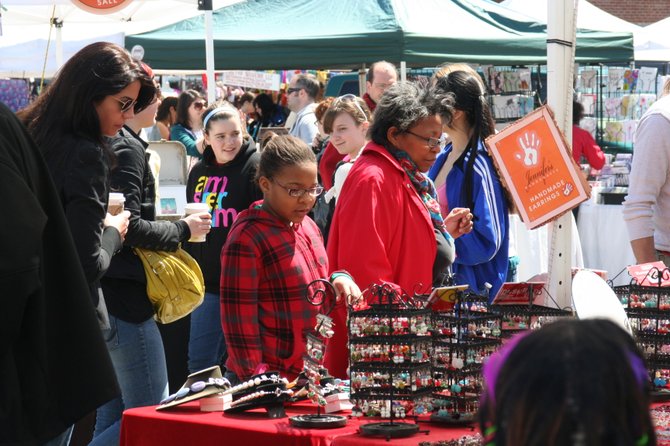 Facebook
Facebook
 X
X
 Instagram
Instagram
 TikTok
TikTok
 Youtube
Youtube

It felt like an Ottoman bazaar: Tables and tents formed a maze of narrow walkways, and everywhere I looked, I saw jewelry and CD's and hand-spun garments. Middle-aged woman sat in lawn chairs, wearing floppy hats to keep out the blinding sun. Vintage furniture stood alongside rolls of Persian rugs. A musician noodled on his saxophone for spare change.
"How often does this happen?" I asked my brother as we ambled past farm-fresh produce.
"Every Sunday," Joe said. "It's kind of a big deal."
A big deal, indeed. Our parents grew up in the Maryland suburbs, and they remember when D.C. was gutted by riots and fire. For a long time, Capitol Hill – where my brother now lives – was a dangerous place to even drive through, much less stroll. To see portraits of jazz musicians alongside potted vases, displayed in the open air by smiling artists, shows how far this part of the city has come.
I've visited D.C. every year since birth to see uncles and grandparents. I've always known the District as a hotbed of crime and racial tension, decimated rowhouses and forced gentrification. But that day in the Market, D.C. seemed brighter than it had ever been. Not far from these stalls, crack was being dealt and police raids were being plotted. But if one neighborhood could rejuvenate, maybe others could, too. For the first time in 30 years of visits, I felt something like hope.


It felt like an Ottoman bazaar: Tables and tents formed a maze of narrow walkways, and everywhere I looked, I saw jewelry and CD's and hand-spun garments. Middle-aged woman sat in lawn chairs, wearing floppy hats to keep out the blinding sun. Vintage furniture stood alongside rolls of Persian rugs. A musician noodled on his saxophone for spare change.
"How often does this happen?" I asked my brother as we ambled past farm-fresh produce.
"Every Sunday," Joe said. "It's kind of a big deal."
A big deal, indeed. Our parents grew up in the Maryland suburbs, and they remember when D.C. was gutted by riots and fire. For a long time, Capitol Hill – where my brother now lives – was a dangerous place to even drive through, much less stroll. To see portraits of jazz musicians alongside potted vases, displayed in the open air by smiling artists, shows how far this part of the city has come.
I've visited D.C. every year since birth to see uncles and grandparents. I've always known the District as a hotbed of crime and racial tension, decimated rowhouses and forced gentrification. But that day in the Market, D.C. seemed brighter than it had ever been. Not far from these stalls, crack was being dealt and police raids were being plotted. But if one neighborhood could rejuvenate, maybe others could, too. For the first time in 30 years of visits, I felt something like hope.
Comments